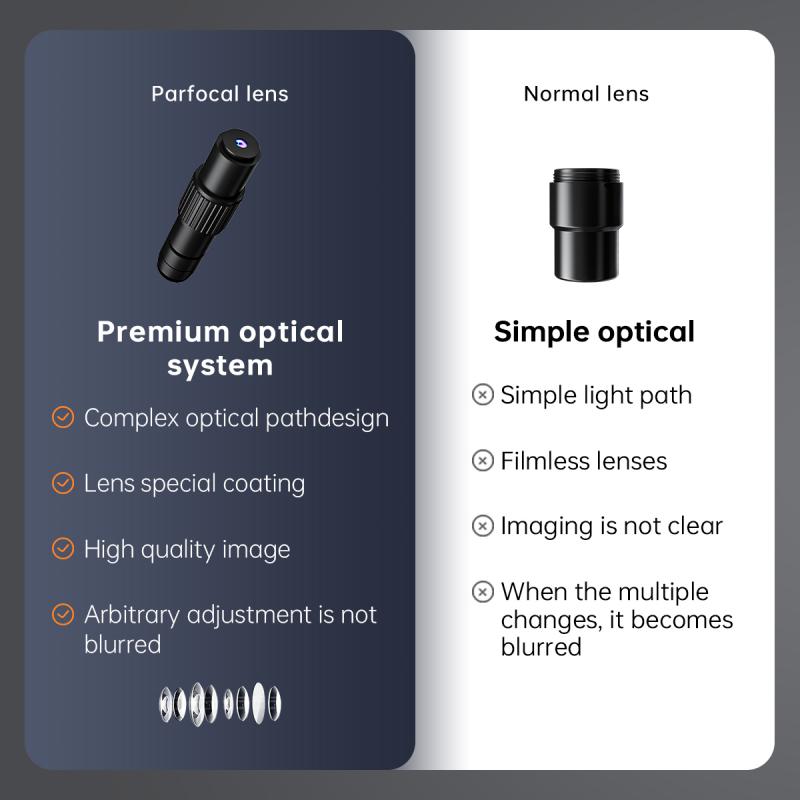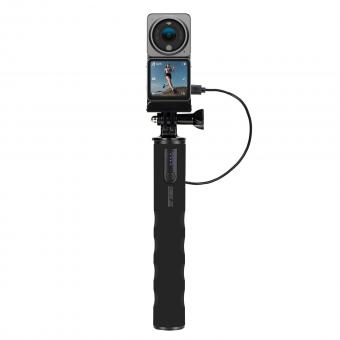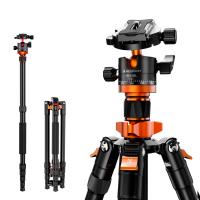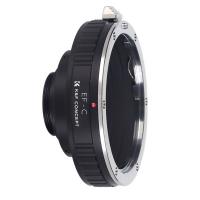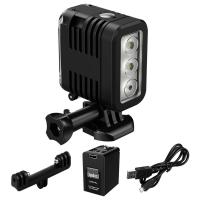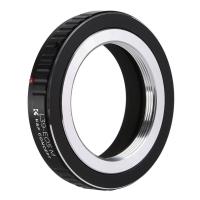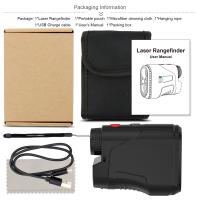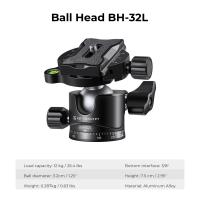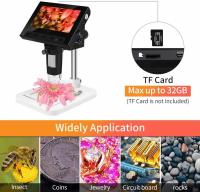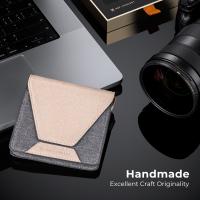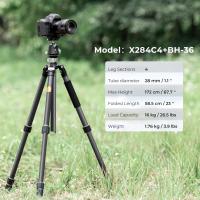How To Make A Microscope Model ?
To make a microscope model, you will need a few materials such as a small cardboard box, two small convex lenses, a small LED light, a battery, some wires, and basic crafting supplies like glue, scissors, and paint. Start by cutting a small hole in one side of the cardboard box to serve as the viewing window. Then, attach one of the convex lenses to the opposite side of the box, positioning it in the center of the hole. Next, attach the LED light inside the box, near the lens, and connect it to the battery using the wires. Finally, decorate the box as desired and ensure that the second convex lens is positioned in front of the viewing window. This will act as the eyepiece. Now, when you look through the eyepiece, the object placed in front of the first lens should appear magnified.
1、 Gathering Materials and Tools
To make a microscope model, you will need to gather a few materials and tools. Here is a step-by-step guide on how to do it:
1. Cardboard or foam board: Start by gathering a piece of cardboard or foam board as the base for your microscope model. This will serve as the platform for the different components.
2. Magnifying lens: You will need a magnifying lens to act as the objective lens of your microscope. You can find magnifying lenses at craft stores or online. Choose one with a suitable magnification level for your model.
3. LED light: To illuminate your specimen, you will need an LED light. You can use a small LED light or even repurpose a flashlight by removing the casing and attaching it to your model.
4. Small glass slide: Find a small glass slide to place your specimen on. You can use a microscope slide or even a small piece of glass from a picture frame.
5. Glue and tape: Use glue or tape to secure the different components of your microscope model to the base. Make sure to use a strong adhesive that will hold everything in place.
6. Optional: If you want to add more realism to your model, you can include additional features such as an adjustable stage or a focusing mechanism. These can be made using small gears, screws, or even LEGO pieces.
Remember to be creative and adapt the steps according to the materials and tools you have available. You can also search online for inspiration and different approaches to making a microscope model.
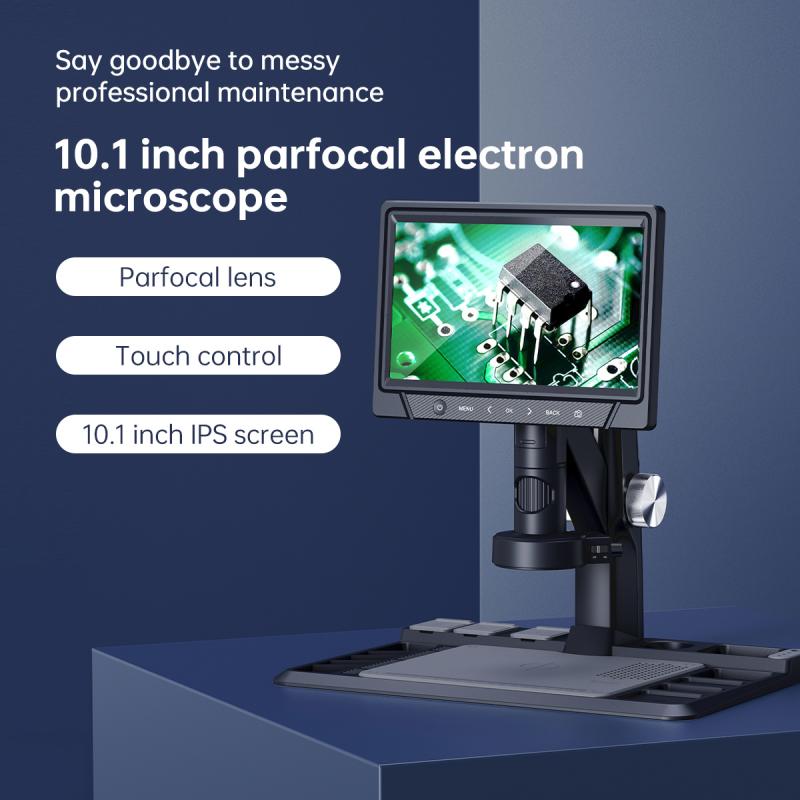
2、 Constructing the Base and Stand
To make a microscope model, you will first need to construct the base and stand. This is an essential step as it provides stability and support for the entire microscope structure. Here's how you can do it:
1. Gather the materials: You will need a sturdy base material such as wood or plastic, a stand material such as a metal rod or PVC pipe, a drill, screws, and a screwdriver.
2. Measure and mark: Determine the desired dimensions for your base and stand. Use a ruler or measuring tape to mark the measurements on the base material.
3. Drill holes: Using a drill, create holes in the base material where the stand will be attached. Make sure the holes are aligned properly to ensure stability.
4. Attach the stand: Insert the stand material into the drilled holes on the base. Secure it in place by using screws and a screwdriver. Make sure the stand is firmly attached to the base.
5. Test stability: Once the stand is attached, check the stability of the base and stand. Ensure that the microscope model does not wobble or tip over easily.
6. Make adjustments if necessary: If the model is not stable, you may need to make adjustments. This could involve reinforcing the base or stand, or using additional screws for added support.
It is important to note that the construction of a microscope model can vary depending on the specific design and materials used. Therefore, it is always recommended to refer to any accompanying instructions or consult online resources for additional guidance.

3、 Creating the Lens System
To create a microscope model, one of the most crucial components is the lens system. The lens system in a microscope is responsible for magnifying the specimen and allowing for clear visualization. Here is a step-by-step guide on how to create the lens system for a microscope model:
1. Gather the necessary materials: You will need two convex lenses, a light source, a specimen slide, and a base to hold the lenses.
2. Position the lenses: Place one convex lens at the top of the base and another at the bottom. Ensure that the lenses are aligned and parallel to each other.
3. Adjust the distance between the lenses: The distance between the lenses determines the magnification power. Experiment with different distances to achieve the desired magnification level.
4. Position the light source: Place the light source below the bottom lens. This will provide illumination for the specimen.
5. Prepare the specimen: Mount the specimen on a slide and place it on the base between the two lenses.
6. Observe the specimen: Look through the top lens and adjust the focus by moving the slide up or down until the specimen comes into clear view.
It is important to note that this model represents a simplified version of a microscope and may not provide the same level of magnification and clarity as a real microscope. However, it can serve as a useful educational tool to understand the basic principles of microscopy.
From a modern perspective, advancements in technology have led to the development of more sophisticated microscope models. These models often incorporate additional features such as adjustable magnification levels, built-in lighting systems, and digital imaging capabilities. These advancements have greatly enhanced the field of microscopy, allowing for more precise and detailed observations of microscopic specimens.
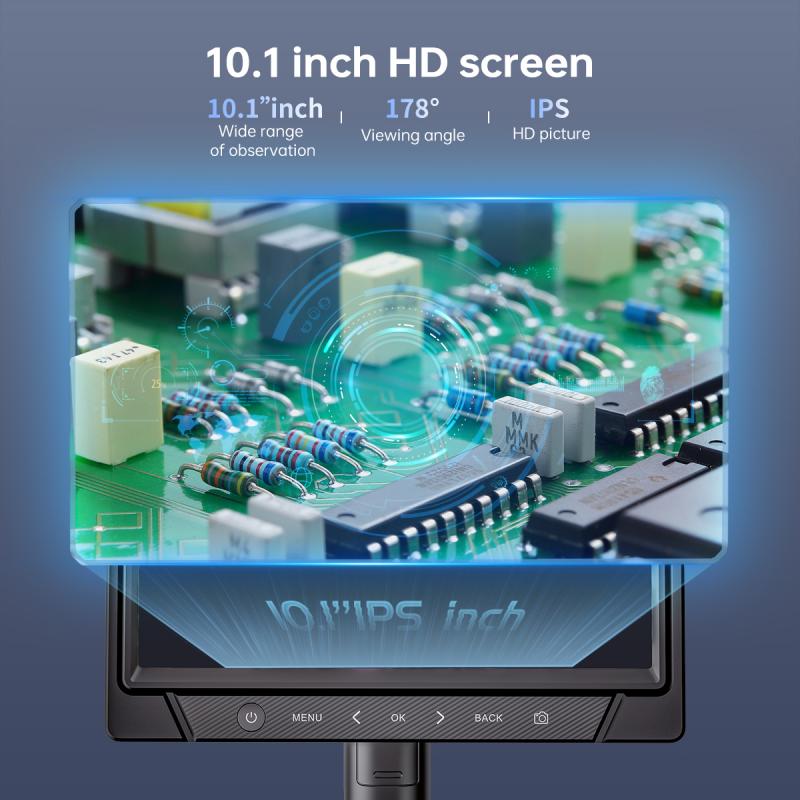
4、 Assembling the Microscope Components
To make a microscope model, you will need to assemble the microscope components in the following steps:
1. Base: Start by attaching the base of the microscope to a sturdy surface. This will provide stability to the model.
2. Arm: Attach the arm of the microscope to the base. The arm should be positioned vertically to hold the other components.
3. Stage: Attach the stage to the arm. The stage is where you place the specimen for observation. Make sure it is securely attached and level.
4. Objective lenses: Attach the objective lenses to the rotating nosepiece. The objective lenses are responsible for magnifying the specimen. Choose lenses with different magnification powers for versatility.
5. Eyepiece: Attach the eyepiece to the top of the arm. The eyepiece is where you look through to observe the specimen. It usually has a magnification power of 10x.
6. Focus knobs: Attach the coarse and fine focus knobs to the arm. These knobs allow you to adjust the focus of the microscope to get a clear image of the specimen.
7. Light source: Depending on the type of microscope model you are making, you can either attach a built-in light source or use an external light source. Proper illumination is crucial for clear observation.
8. Power source: If your microscope model requires a power source, make sure to connect it properly. This could be batteries or a power cord, depending on the design.
9. Adjustments: Once all the components are assembled, make any necessary adjustments to ensure smooth movement and proper alignment of the lenses.
Remember to refer to the specific instructions provided with your microscope model kit for accurate assembly. Additionally, you can explore online resources and videos for a visual guide on assembling microscope models.
In recent years, there have been advancements in microscope technology, such as the introduction of digital microscopes. These models often include a built-in camera or the ability to connect to a computer or smartphone for image capture and analysis. When making a microscope model, you can incorporate these features by adding a small camera module or a smartphone holder to the eyepiece. This allows for easy documentation and sharing of observations. Additionally, some models now come with LED lights instead of traditional bulbs, providing brighter and more energy-efficient illumination. Consider these advancements when selecting components for your microscope model.
